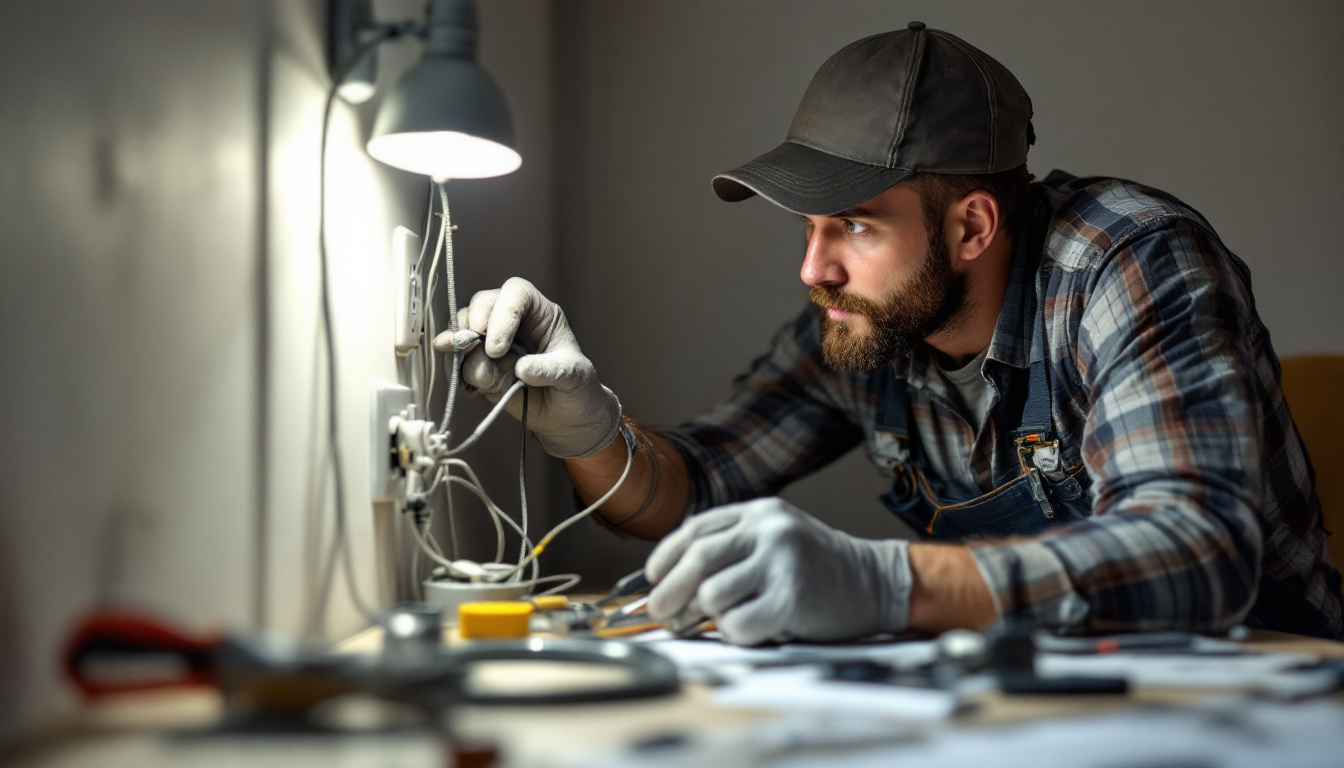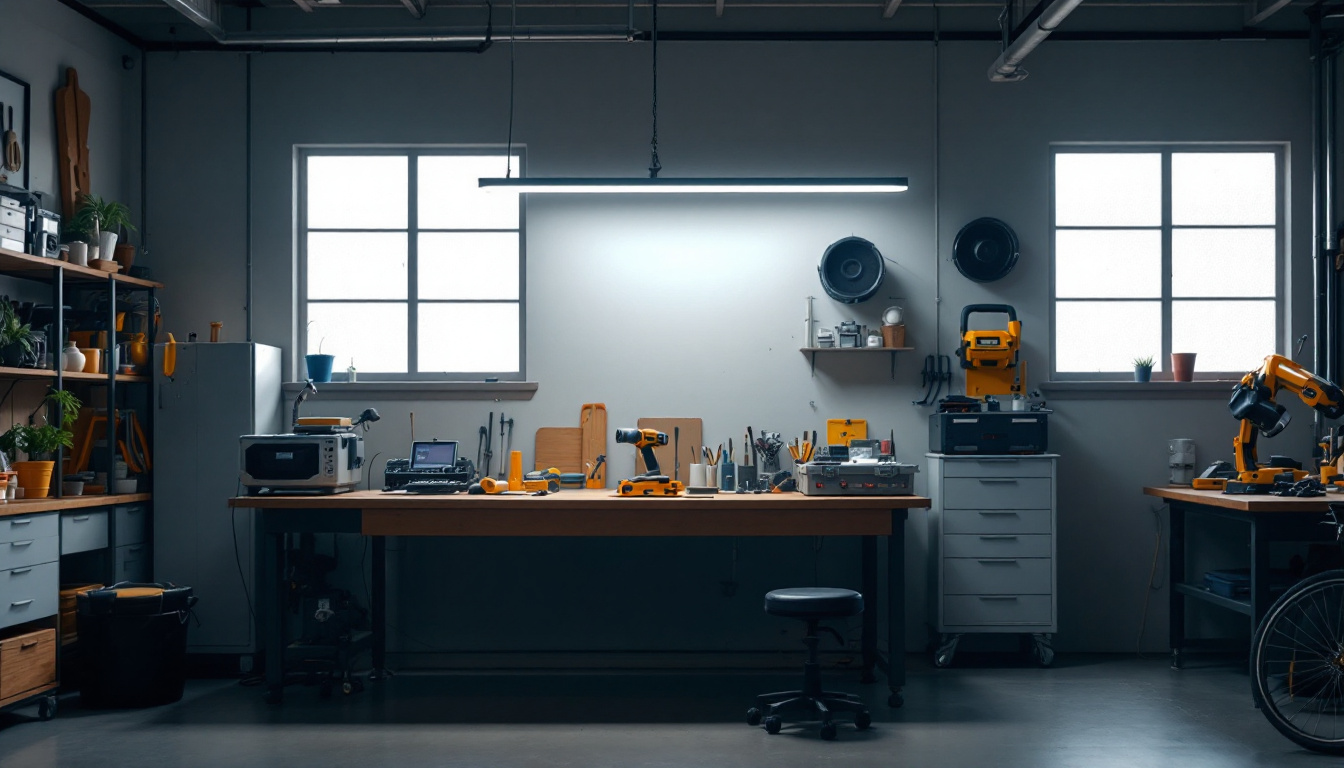

As a lighting contractor, the intricacies of electrical installations can often present both challenges and opportunities. One area that frequently causes confusion is the installation of switched outlets. While the concept seems straightforward, there are common pitfalls that can lead to frustration, safety hazards, and costly rework. This guide aims to highlight these mistakes and provide insights to help contractors enhance their skills and improve client satisfaction.
Switched outlets are electrical outlets that can be controlled by a wall switch. They offer convenience and flexibility in lighting design, allowing for easy control of lamps and other devices. However, their installation requires careful planning and execution to ensure functionality and safety.
Switched outlets are often used in living rooms, bedrooms, and home offices. In these settings, they allow homeowners to control lighting without needing to reach for the lamp’s switch. This feature is particularly useful in spaces where multiple light sources are utilized, enhancing the overall ambiance and usability of the area. For instance, in a living room, a switched outlet can control a floor lamp that provides warm lighting for movie nights, while also allowing for easy access to turn it off when the evening is over. Additionally, in bedrooms, switched outlets can be strategically placed near the bed, enabling residents to turn off lights without having to get up, which is especially beneficial during late-night hours.
Adhering to local electrical codes is paramount when installing switched outlets. These codes dictate the proper wiring methods, load calculations, and safety measures that must be followed. Failing to comply can lead to dangerous situations, including electrical fires or shock hazards. Always ensure that installations meet the National Electrical Code (NEC) requirements and any local amendments. Furthermore, it’s important to consider the type of devices that will be plugged into these outlets, as different appliances may have varying power requirements. For example, a switched outlet intended for a high-wattage device like a heater must be wired to handle the increased load, which may necessitate the use of heavier gauge wire and a dedicated circuit. This attention to detail not only ensures compliance but also enhances the longevity and reliability of the electrical system.
While the concept of switched outlets may seem simple, several common mistakes can undermine their effectiveness and safety. Understanding these pitfalls is crucial for any lighting contractor looking to deliver high-quality work.
One of the most frequent errors in switched outlet installations is improper wiring. Misconnecting wires can lead to outlets that do not function as intended. For example, connecting the switch to the wrong terminal can cause the outlet to remain live even when the switch is off, creating a potential shock hazard. It’s essential to follow the manufacturer’s wiring diagrams and ensure that the switch controls the correct outlet terminals.
Additionally, using the wrong gauge wire can also lead to issues. Ensure that the wire gauge is appropriate for the load it will carry, as undersized wiring can lead to overheating and increased risk of fire. Furthermore, it’s important to use high-quality connectors and terminals to ensure a secure and reliable connection. Loose connections can lead to arcing, which not only affects performance but can also pose serious safety risks.
Another critical mistake is neglecting load calculations. Each outlet has a maximum load capacity, and exceeding this limit can cause circuit breakers to trip or, worse, create a fire hazard. Lighting contractors must assess the total wattage of all devices that will be connected to the switched outlet and ensure that the circuit can handle the load.
It’s advisable to leave some margin for future additions or changes in usage. Proper load management not only ensures safety but also enhances the longevity of the electrical system. Additionally, contractors should consider the type of devices that will be plugged into the outlet; for instance, high-wattage items like space heaters or power tools can significantly impact load calculations. Keeping a detailed log of the devices and their wattage can help in planning and avoiding overload situations.
Designing switched outlets goes beyond mere functionality; it involves considering aesthetics, user experience, and overall integration within the space. Here are some key design considerations to keep in mind.
The placement of switched outlets is crucial for user convenience. Outlets should be located where they are easily accessible, allowing users to control lighting without hassle. For example, in living rooms, placing switched outlets near seating areas can enhance comfort and usability.
Moreover, consider the height at which the outlets are installed. Standard outlet heights may not be suitable for all applications, especially if the outlet is meant to control a lamp on a side table. Adjusting the height can significantly improve user experience. In addition, think about the flow of movement within the space; outlets should not obstruct pathways or create clutter, which can detract from the overall design aesthetic.
As smart home technology continues to evolve, integrating switched outlets with smart systems is becoming increasingly popular. Lighting contractors should familiarize themselves with smart switches and outlets that allow for remote control and automation. This integration not only enhances convenience but also appeals to tech-savvy clients looking for modern solutions.
When installing smart outlets, ensure that they are compatible with the existing electrical system and that all components are properly configured to avoid connectivity issues. Additionally, consider the user interface of these smart systems; a well-designed app or control panel can make a significant difference in user satisfaction. Providing clients with clear instructions and support for their new technology can further enhance their experience and ensure they fully utilize the capabilities of their smart outlets.
Safety should always be a top priority during any electrical installation. Switched outlets are no exception. Here are some essential safety precautions to follow.
Before starting any work on switched outlets, it is imperative to turn off the power at the circuit breaker. This simple step can prevent electrical shocks and ensure a safe working environment. Always double-check with a voltage tester to confirm that no power is flowing to the outlet before proceeding with the installation. Additionally, it is wise to place a warning sign on the circuit breaker to alert others that work is being done, further reducing the risk of accidental reactivation while you are in the process of installation.
Wearing appropriate personal protective equipment (PPE) is essential when working with electrical systems. This includes safety glasses, insulated gloves, and non-conductive footwear. Such precautions can protect against accidental shocks and injuries during installation. Moreover, consider using a hard hat if working in an area where there is a risk of falling objects, and ensure that your clothing is fitted and not loose to avoid any entanglement with tools or equipment. Keeping a first aid kit nearby is also advisable, as it allows for immediate response to any minor injuries that may occur.
Using the right tools for the job is crucial in maintaining safety during installation. Ensure that all tools are in good condition and rated for electrical work. Insulated tools can provide an extra layer of protection against electrical shock. Additionally, familiarize yourself with the tools you will be using; this includes understanding their proper handling and maintenance. For instance, using a wire stripper instead of a knife can minimize the risk of accidental cuts and ensure clean, safe connections. Always store tools in a dry, organized space to prevent accidents and ensure they are easily accessible when needed.
A tidy work environment is essential for safety during any electrical installation. Clutter can lead to accidents, such as trips and falls, which can be particularly dangerous when working with electrical systems. Before beginning your installation, take the time to clear the area of any unnecessary items, tools, or debris. Additionally, ensure that any cords or wires are neatly organized and secured to avoid tripping hazards. Keeping your workspace well-lit can also help you see clearly and work more efficiently, further enhancing safety during the installation process.
Once the installation is complete, testing the switched outlets is crucial to ensure they function correctly. Proper testing can help identify any issues early, preventing future problems for the homeowner.
Functional testing involves checking that the switch operates the outlet as intended. Turn the switch on and off several times to confirm that the outlet responds appropriately. Additionally, plug in a lamp or device to verify that it receives power when the switch is on and is off when the switch is off.
A multimeter is an invaluable tool for troubleshooting electrical issues. Use it to measure voltage at the outlet to ensure that it is receiving power. If the outlet is not functioning correctly, check for loose connections, damaged wires, or issues with the circuit breaker.
Effective communication with clients is essential for successful installations. Educating clients about the operation and maintenance of switched outlets can enhance their satisfaction and reduce the likelihood of future issues.
When handing over the project, take the time to explain how the switched outlets work. Provide clear instructions on how to operate the switches and what to do if they encounter any issues. This proactive approach can empower clients and reduce the number of service calls for minor problems.
Clients may not be aware of the importance of regular maintenance for their electrical systems. Offering tips on how to care for switched outlets, such as avoiding overloading and checking for signs of wear, can help prolong the life of the installation. Encourage them to report any unusual behavior, such as flickering lights or tripped breakers, promptly.
Switched outlets are a valuable addition to any lighting design, providing convenience and enhancing the functionality of spaces. However, lighting contractors must be aware of the common mistakes that can arise during installation. By understanding proper wiring techniques, load calculations, design considerations, safety precautions, and effective client communication, contractors can avoid pitfalls and deliver high-quality installations.
Ultimately, the goal is to create a safe, functional, and aesthetically pleasing environment for clients. By following the guidelines outlined in this article, lighting contractors can enhance their expertise, improve client satisfaction, and build a reputation for excellence in the industry.
Ready to elevate your lighting installations with the best products on the market? Look no further than LumenWholesale for all your switched outlet needs and more. We provide contractors with high-quality, specification-grade lighting products at unbeatable wholesale prices, ensuring your projects shine without breaking the bank. Say goodbye to local distributor markups and hello to superior lighting products with free shipping on bulk orders. Don’t compromise on quality or value; explore our selection and start saving today.

Discover the insider tips and expert techniques lighting contractors use to transform outdoor spaces with white hanging string lights.

Discover how Type T Lamps can revolutionize your lighting projects and give you a competitive edge in securing more contracts.

Discover the essential role of ballast in lighting systems and why it’s crucial for contractors to understand its functionality.

Discover the common oversights lighting contractors make with 8 ft shop lights.
Get notified when NEW deals are released.
Optimize your budget with wholesale discounts.
Only top-quality, specification-grade lighting products.
No additional costs at checkout - what you see is what you pay.
We understand the unique needs of contractors.